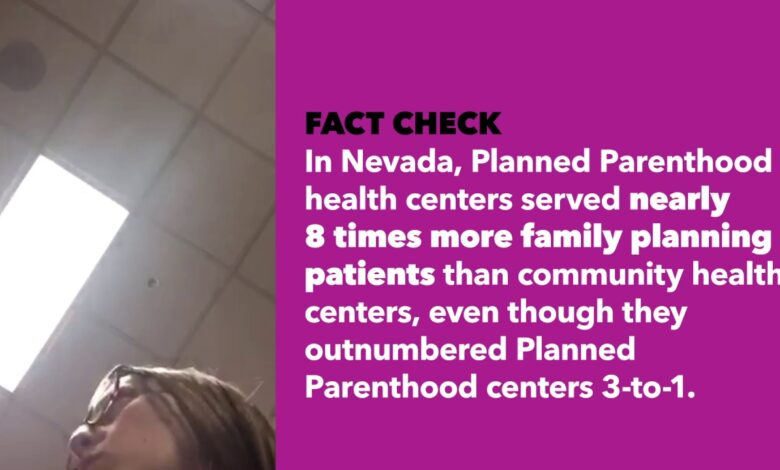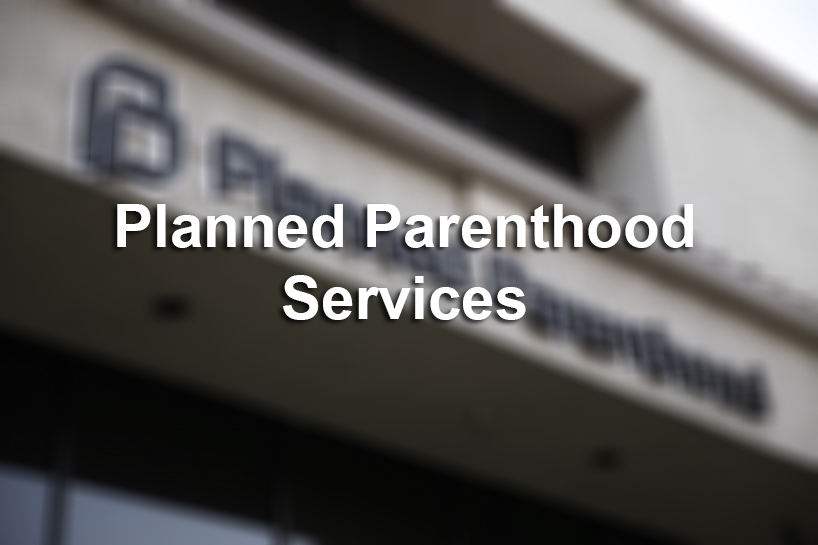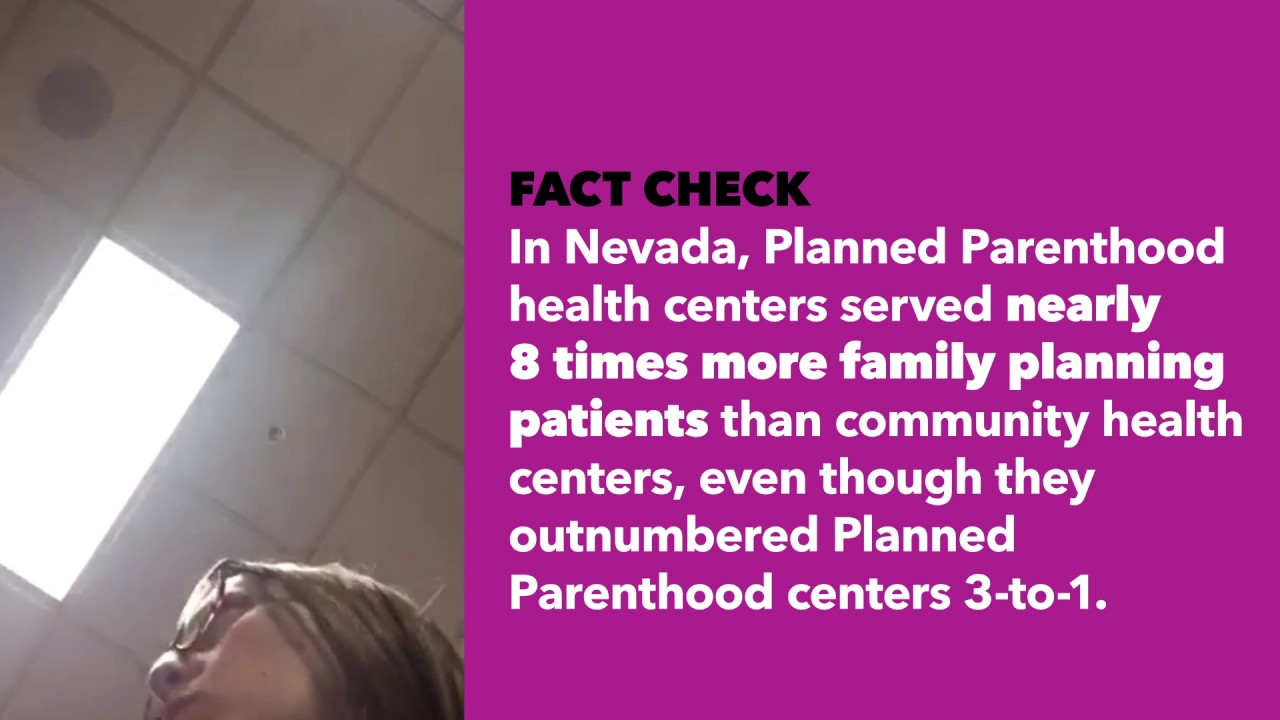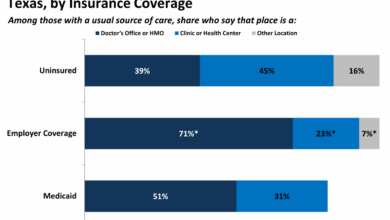
What if Planned Parenthood went out of business? This scenario raises critical questions about access to reproductive healthcare, financial implications, and potential community responses. Losing a vital provider like Planned Parenthood would have far-reaching consequences, impacting various demographics and the overall healthcare system. The potential for a shortage of services, increased costs, and a decline in women’s health are just a few of the potential outcomes.
This deep dive explores the complex issues.
The closure of Planned Parenthood would likely lead to a significant disruption in reproductive healthcare services, affecting access to essential care for countless individuals. This would disproportionately impact underserved communities and potentially lead to long-term consequences for women’s health. The discussion also touches on potential alternative providers and the challenges they might face in meeting the increased demand.
Impact on Access to Reproductive Healthcare

The closure of Planned Parenthood, a significant provider of reproductive healthcare services, would undoubtedly have a profound and far-reaching impact on access to vital care for millions of individuals. This loss would create a significant gap in the healthcare system, potentially leading to adverse consequences for women’s health, particularly for those in underserved communities. The implications extend beyond basic reproductive services, affecting overall health and well-being.The loss of Planned Parenthood’s comprehensive services would directly impact access to a wide array of reproductive healthcare.
This includes preventative care like well-woman exams, contraception counseling and provision, STI testing and treatment, and crucial prenatal care. The absence of this integrated, accessible provider would create barriers for individuals to obtain these essential services, potentially leading to delayed or missed diagnoses and treatment of critical health issues.
Potential Consequences of Closure on Access to Care
The closure of Planned Parenthood would create a significant void in reproductive healthcare, particularly for low-income individuals and minority communities who rely heavily on their services. These communities often face systemic barriers to accessing healthcare, including financial constraints, geographical limitations, and implicit biases in the healthcare system. The loss of Planned Parenthood would exacerbate these existing inequalities. A reduced network of providers, combined with increased costs and limited availability of alternative services, could lead to substantial delays in accessing crucial reproductive healthcare.
Thinking about what if Planned Parenthood shut down is pretty scary. It’d be a huge loss for reproductive healthcare, especially for those who rely on them. However, companies like Hormel and Kellogg’s getting into the fake meat business hormel kelloggs getting into the fake meat business might offer a tiny silver lining, showcasing how innovative food production can be.
Still, the bigger picture of access to vital healthcare remains a critical concern, and Planned Parenthood’s closure would be a serious blow.
Disproportionate Impact on Specific Demographics
Certain demographics would be disproportionately affected by the loss of Planned Parenthood. Low-income individuals, women of color, and those residing in rural areas would experience greater challenges in accessing alternative providers. Financial constraints and limited transportation options would significantly impede their ability to secure necessary care. For instance, a lack of readily available and affordable transportation could prevent individuals from traveling to clinics or hospitals offering similar services.
This would result in increased barriers to healthcare, further marginalizing already vulnerable populations.
Long-Term Effects on Women’s Health and Well-being
The closure of Planned Parenthood would have long-term effects on women’s health and well-being. Delayed or missed diagnoses and treatment of gynecological conditions, such as cervical cancer screenings, could lead to serious health complications. Reduced access to contraception could increase unintended pregnancies and associated health risks. The cumulative effect of these factors could contribute to higher rates of maternal mortality and morbidity, particularly among marginalized groups.
Alternative Providers and Potential Challenges
| Type of Reproductive Healthcare Service | Potential Alternative Providers | Potential Challenges |
|---|---|---|
| Well-woman exams | Private gynecologists, community health centers, federally qualified health centers | Higher costs, potential lack of culturally competent providers, and geographical limitations. |
| Contraception counseling and provision | Private physicians, family planning clinics, some pharmacies | Potential lack of comprehensive counseling services, insurance coverage limitations, and potential judgmental attitudes. |
| STI testing and treatment | STD clinics, private physicians, urgent care centers | Limited availability, potential stigma associated with STI testing, and potentially higher costs. |
| Prenatal care | Obstetricians, some community health centers | Longer wait times, potential lack of specialized care, and increased financial burden. |
The table above highlights potential alternative providers for various reproductive healthcare services. However, these alternative providers might not always offer the same level of comprehensive care or be readily accessible to all individuals. Individuals may face challenges including higher costs, limited availability, geographical barriers, and potential lack of culturally competent providers. Finding an appropriate and affordable alternative provider could be particularly challenging for those in marginalized communities.
Furthermore, patients may experience difficulties navigating the healthcare system and coordinating care with various providers. Lack of coordination could delay diagnosis and treatment.
Financial Implications and Funding: What If Planned Parenthood Went Out Of Business
Planned Parenthood plays a vital role in providing reproductive healthcare, impacting not only individual patients but also the broader healthcare system. Its potential closure would undoubtedly create a significant ripple effect, particularly regarding financial resources and access to essential services. The organization’s substantial financial contributions to the healthcare infrastructure are significant and cannot be easily replaced.The financial ramifications of Planned Parenthood’s absence would be felt across the spectrum of reproductive healthcare.
This would lead to significant funding gaps, potentially impacting the availability and affordability of vital services like birth control, cancer screenings, and STD testing. The long-term effects on public health are undeniable and require careful consideration.
Potential Funding Gaps in Reproductive Healthcare
The closure of Planned Parenthood would create a substantial void in the funding landscape for reproductive healthcare services. This void could lead to a decrease in the availability of affordable care, potentially leading to higher costs for patients. Further, the reduced capacity to provide comprehensive care could negatively impact the overall health and well-being of vulnerable populations.
Alternative Funding Sources and Their Limitations
Numerous alternative funding sources could emerge to compensate for the loss of Planned Parenthood’s funding. These include government grants, private donations, and partnerships with other healthcare providers. However, each of these options comes with limitations.
- Government grants: Government funding for reproductive healthcare may shift or diminish, potentially leading to a decline in the provision of these services. This could depend on political climates and policy changes.
- Private donations: While private donations could provide some financial relief, the sustained funding needed to maintain the quality and breadth of reproductive healthcare services would likely be insufficient on their own. The volatility of private funding sources also presents a challenge.
- Partnerships with other healthcare providers: Collaborations with other organizations could help to fill the gap, but their capacity may be limited. Existing partnerships might not be able to handle the increased demand and financial burden.
Changes in Government Funding for Reproductive Healthcare
Government funding for reproductive healthcare is a critical component of the healthcare system. The potential closure of Planned Parenthood could lead to significant changes in how and where this funding is allocated. This would depend on political and societal influences, which could lead to a reduction in the amount of government funding allocated to reproductive healthcare or a shift in the types of services covered.
The shift could be a significant issue for those in vulnerable populations, with limited access to healthcare.
Thinking about Planned Parenthood shutting down is scary. Imagine the ripple effect, especially when considering the dozens of lawsuits being filed over the opioid epidemic here’s more on that. The lack of access to vital reproductive healthcare would undoubtedly exacerbate existing societal issues, and it would be a significant blow to women’s health and well-being, leaving many without crucial support systems.
It’s a complex issue with serious consequences.
Comparison of Funding Models for Reproductive Healthcare
The table below compares different funding models for reproductive healthcare, highlighting their potential strengths and limitations.
| Funding Model | Strengths | Limitations |
|---|---|---|
| Public Funding (Government) | Potentially sustainable, can ensure broad access | Political influence, potential for reduction or redirection |
| Private Funding (Donations, Foundations) | Flexibility in service design, potential for innovation | Volatility, limited capacity to meet large-scale needs |
| Mixed Funding (Public and Private) | Balanced approach, potential for long-term sustainability | Coordination challenges, potential for conflicting priorities |
Potential for Community and Political Responses
The potential closure of Planned Parenthood would undoubtedly trigger a significant community and political response. A cascade of reactions, ranging from grassroots activism to legislative action, would likely ensue, driven by deeply held beliefs about reproductive healthcare access and the role of government in healthcare provision. The public’s reaction would be multifaceted, influenced by existing political affiliations, personal values, and the perceived impact on their own lives.
Community Activism and Advocacy
Community organizations and advocacy groups would likely mobilize to defend access to reproductive healthcare. Protests, rallies, and community outreach campaigns would likely be employed to raise awareness and garner public support. Existing networks of reproductive rights advocates would play a crucial role in coordinating these efforts, potentially leveraging social media and other digital platforms to amplify their message and connect with a wider audience.
Thinking about what if Planned Parenthood disappeared? It’s a scary thought, especially considering the potential ripple effects on women’s healthcare. For instance, access to crucial reproductive services, like screenings and preventative care, would be significantly impacted. And let’s not forget that breast cancer treatments can increase risk of heart disease, a serious complication that women need access to resources to manage.
Ultimately, the loss of Planned Parenthood would leave a gaping hole in the healthcare system, affecting women’s overall well-being and potentially leading to worse health outcomes.
Historical examples of successful community mobilization during similar healthcare access crises, such as the fight against the Hyde Amendment, demonstrate the power of collective action in influencing policy.
Potential Political Reactions and Policy Changes
Political responses to a Planned Parenthood closure would vary depending on the political climate and the specific policies at stake. Legislative efforts to either maintain or restrict reproductive healthcare access would be likely, and these efforts could result in significant policy changes. For instance, states with Republican-leaning legislatures might push for policies that limit reproductive healthcare options, while states with Democratic leanings might seek to expand access through legislation or financial support for alternative providers.
Public Opinion
Public opinion on reproductive healthcare and Planned Parenthood’s role would likely be polarized. The closure of Planned Parenthood could serve as a rallying point for reproductive rights advocates, leading to increased public awareness and support for these causes. Conversely, the closure might also galvanize opposition from those who oppose abortion or other reproductive healthcare services. The potential impact on public opinion would depend on various factors, including the media coverage of the event, the nature of the political discourse, and the strategies employed by both sides of the issue.
Strategies for Organizing Public Support
Organizing public support for reproductive healthcare would require a multifaceted approach. Building coalitions between various advocacy groups, leveraging social media and online platforms for outreach, and coordinating grassroots efforts across different communities would be essential. Public education campaigns aimed at dispelling misinformation and emphasizing the importance of access to comprehensive reproductive healthcare would be crucial. Effective strategies would need to resonate with diverse demographics and address their specific concerns.
Table of Potential Community Responses and Effectiveness
| Potential Community Response | Potential Effectiveness |
|---|---|
| Protests and Demonstrations | High potential for raising awareness and garnering media attention, potentially influencing public opinion. Effectiveness depends on the scale and organization of the protests. |
| Community Outreach and Education Campaigns | High potential for educating the public and mobilizing support, particularly among those who are not yet actively engaged in the issue. Effectiveness hinges on clear messaging and targeted outreach. |
| Grassroots Advocacy and Petitioning | Medium potential for influencing policy at the local and state levels. Effectiveness depends on the number of signatures and the political context. |
| Partnerships with Other Organizations | High potential for expanding reach and amplifying the message. Effectiveness depends on the strength and shared goals of the partnering organizations. |
Alternative Healthcare Providers and Services

The potential closure of Planned Parenthood would undoubtedly create a significant gap in reproductive healthcare access for many. Understanding the existing and potential alternative providers is crucial to assessing the impact and planning for a more robust healthcare system. This analysis explores how existing providers might adapt and how the system could be reorganized to best serve patients.Existing providers like family planning clinics, community health centers, and some private OB/GYNs already offer some reproductive health services.
However, the volume of patients seeking care may significantly increase, demanding adjustments in service capacity and potential collaborations.
Existing Alternative Providers
Existing providers, like community health centers and private OB/GYNs, play a vital role in reproductive health. Many already offer some services like contraception, STD testing, and basic gynecological care. Adapting to increased demand will require expanding hours, potentially adding staff, and possibly partnering with other providers to share resources. These existing centers often serve specific populations and geographic areas, which means some communities might face greater challenges in accessing care if the existing providers cannot scale up quickly enough.
Potential Alternative Providers
Several potential alternative providers could emerge to address the void, including non-profit organizations dedicated to reproductive healthcare, faith-based clinics offering related services, and even expanded services within existing general healthcare facilities. The emergence of specialized telehealth platforms offering virtual consultations and remote monitoring could also play a role in broadening access. However, these alternatives may face challenges in terms of funding, staffing, and regulatory hurdles.
Gaps in Services Offered by Potential Alternatives
While potential alternative providers could offer some services, gaps may exist. For instance, some might lack the comprehensive range of services offered by Planned Parenthood, such as abortion care, which may necessitate further support for patients needing these services. Geographic limitations, availability of qualified staff, and funding constraints could also contribute to gaps in service provision. The regulatory environment for alternative providers might also vary significantly, affecting the type and extent of services they can offer.
Reorganizing the Healthcare System, What if planned parenthood went out of business
To better support patients, the healthcare system could be reorganized by encouraging collaboration and resource sharing among existing and potential providers. Incentivizing partnerships between community health centers and private providers could streamline access and reduce fragmentation. Establishing clear referral pathways could facilitate seamless transitions for patients needing specialized care. Moreover, increased government funding for community health centers could help them expand services and address the potential rise in demand.
Addressing regulatory barriers to the provision of reproductive healthcare services by alternative providers could also be beneficial.
Comparison of Services
| Service | Planned Parenthood | Community Health Centers | Private OB/GYNs | Faith-Based Clinics | Telehealth Platforms |
|---|---|---|---|---|---|
| Contraception | Comprehensive | Often offered | Often offered | May offer, but vary | Increasingly available |
| STD Testing & Treatment | Comprehensive | Often offered | Often offered | May offer, but vary | Increasingly available |
| Pregnancy Testing & Counseling | Comprehensive | Often offered | Often offered | May offer, but vary | Limited options |
| Abortion Care | Widely available | Limited availability | Limited availability | Rarely offered | Not offered |
| Breast Exams & Pap Smears | Comprehensive | Often offered | Often offered | May offer, but vary | Limited options |
Impact on Women’s Health and Rights
The potential closure of Planned Parenthood, a major provider of reproductive healthcare, would undoubtedly have a profound and far-reaching impact on women’s health and rights. Access to vital services, from contraception to preventative care, would be significantly jeopardized, potentially leading to unforeseen consequences for women’s overall well-being. The loss of this critical resource could disproportionately affect vulnerable populations, exacerbating existing health disparities.
Potential Impact on Women’s Health
The loss of comprehensive reproductive healthcare services could lead to a rise in unintended pregnancies, particularly among those lacking alternative access. This increase in unintended pregnancies often correlates with a higher risk of maternal mortality and morbidity. Furthermore, the lack of preventative care could lead to delayed or missed diagnoses of other health concerns, impacting women’s overall health and well-being.
Legal Challenges and Implications
The closure of Planned Parenthood could trigger legal challenges from various groups. These challenges might focus on the constitutionality of restricting access to reproductive healthcare services, potentially invoking legal precedents regarding bodily autonomy and equal protection under the law. Legal battles could also arise regarding the availability of funding for alternative providers and the scope of government intervention in healthcare access.
Increased Maternal Mortality and Morbidity Rates
A reduction in access to reproductive healthcare, including prenatal care, could contribute to an increase in maternal mortality and morbidity rates. Studies have consistently shown a correlation between limited access to healthcare and adverse maternal health outcomes. For instance, regions with lower access to prenatal care often exhibit higher rates of complications during pregnancy and childbirth. Delayed or inadequate prenatal care can result in conditions like preeclampsia, gestational diabetes, and premature births, which increase the risk of complications for both mother and child.
Impact on Access to Birth Control
Reduced access to birth control would likely result in an increase in unintended pregnancies. Birth control plays a crucial role in family planning, enabling women to make informed decisions about their reproductive health and well-being. Without reliable access to birth control, women may be forced to resort to less effective or unsafe methods, potentially leading to complications or unwanted pregnancies.
Connections Between Reproductive Healthcare Access and Other Women’s Health Indicators
The following table illustrates potential connections between reproductive healthcare access and other crucial women’s health indicators:
| Reproductive Healthcare Access | Impact on Women’s Health Indicators |
|---|---|
| Limited access to contraception | Increased unintended pregnancies, higher rates of STIs, potential for unsafe abortions |
| Delayed or inadequate prenatal care | Higher risk of maternal mortality and morbidity, increased risk of complications for the newborn |
| Reduced access to preventative care | Delayed diagnosis of other health concerns, exacerbation of existing health conditions |
| Lack of access to comprehensive gynecological services | Potential for delayed or missed diagnoses of cancers or other serious conditions, increased risk of chronic pain |
Impact on Public Health and Well-being
The closure of Planned Parenthood, a significant provider of reproductive healthcare services, would have far-reaching consequences for public health and well-being. Losing access to comprehensive reproductive healthcare, including preventative services and STI testing, would undoubtedly lead to negative health outcomes, particularly for vulnerable populations. This loss would impact not only individuals but also the broader community and the overall healthcare system.The implications for public health are substantial, extending beyond the immediate effects on access to care.
Reduced preventative services and limited STI control measures could lead to a rise in preventable diseases and complications, ultimately straining healthcare resources and increasing the burden on the public health system. This is a complex issue with potential ramifications for everyone.
Impact on Overall Public Health
Reduced access to preventative care, including screenings for various conditions and health education, would negatively affect overall public health. This could lead to delayed diagnoses and increased severity of health problems, potentially increasing healthcare costs in the long term. The loss of readily available reproductive health services would undoubtedly result in an increase in unintended pregnancies, which further strains healthcare resources and impacts public health outcomes.
Potential for Increased STI Transmission and Complications
Planned Parenthood plays a crucial role in STI prevention and treatment. Reduced access to testing, counseling, and treatment could lead to a rise in STI transmission rates. Untreated STIs can have serious long-term health consequences, including infertility, chronic pain, and increased risk of certain cancers. Without readily available testing and treatment, the community will be more susceptible to these diseases, leading to a significant public health concern.
This scenario echoes past experiences where reduced access to preventative healthcare led to an observable increase in sexually transmitted infections.
Consequences for Underserved Populations
Underserved populations, including low-income individuals, minorities, and those in rural areas, are particularly vulnerable to the negative effects of reduced access to reproductive healthcare. Planned Parenthood often serves as a critical point of access for these groups, offering essential services that might otherwise be unavailable. The loss of these services could exacerbate existing health disparities, leading to poorer health outcomes and widening the gap in health equity.
Historical patterns of inequity in healthcare access demonstrate that reduced access leads to disproportionate health burdens on already vulnerable populations.
Long-Term Impacts on Family Planning and Public Health Initiatives
The impact of reduced access to reproductive healthcare could lead to a decline in family planning initiatives and programs. This could affect birth rates, family planning education, and the overall health and well-being of families. Public health initiatives that rely on readily available reproductive health services would face significant challenges in achieving their goals. The loss of access to resources could lead to a decrease in awareness and adherence to healthy behaviors.
Potential for a Decrease in Preventative Care Services
Planned Parenthood provides a wide range of preventative care services, including cancer screenings, well-woman exams, and education on healthy lifestyle choices. The closure of Planned Parenthood could significantly reduce access to these vital services, potentially leading to poorer health outcomes. Reduced preventative care can be seen as a predictor of increased incidence of various health conditions.
Long-Term Implications for the Healthcare System
The potential closure of Planned Parenthood, a significant provider of reproductive healthcare, would ripple through the entire healthcare system, impacting access, funding, and the very nature of reproductive care. This isn’t simply a loss of services; it’s a shift in the landscape, with lasting consequences that extend far beyond the immediate impact. The long-term ramifications will necessitate a re-evaluation of how we structure and fund reproductive healthcare in the country.
Potential Shifts in Reproductive Healthcare Access and Funding
The closure of Planned Parenthood would undoubtedly create a void in reproductive healthcare access, particularly for underserved populations. Funding models for reproductive care would likely face significant challenges. Reduced availability of services could lead to a rise in unintended pregnancies, potentially straining the capacity of other healthcare providers. Public funding for reproductive healthcare could be redirected or even eliminated, altering the landscape of healthcare funding.
Increased reliance on private insurance, which often has limited coverage for these services, would further exacerbate disparities in access.
Increased Demand on Other Healthcare Services
The loss of Planned Parenthood’s comprehensive services could lead to a surge in demand for similar services at other healthcare facilities. This increased demand could strain existing resources, potentially leading to longer wait times, reduced access to specialized care, and increased costs for patients. For instance, if access to contraception diminishes, emergency room visits for unintended pregnancies and complications could increase.
Furthermore, the need for STI testing and treatment could shift to other providers, potentially overwhelming existing clinics.
Possible Shifts in the Medical Profession’s Approach to Reproductive Health
The closure of Planned Parenthood would likely affect the training and specialization within the medical profession. Fewer medical professionals would be exposed to the full spectrum of reproductive health care, potentially leading to a decline in the number of providers specializing in these areas. This could further reduce access to comprehensive care and impact the overall quality of reproductive healthcare.
Furthermore, the lack of hands-on experience in handling complex reproductive issues could influence the medical approach to these conditions.
Table of Possible Long-Term Effects on the Healthcare System
| Aspect | Potential Long-Term Effect |
|---|---|
| Access to Reproductive Healthcare | Reduced access, particularly for low-income individuals and communities of color; increased disparities in care |
| Healthcare Funding | Shift in funding priorities; reduced public funding for reproductive care; increased reliance on private insurance; increased costs for patients |
| Demand on Other Healthcare Services | Increased demand for emergency room services, STI testing, and other related services; potential strain on existing resources |
| Medical Profession | Decreased training opportunities in reproductive health; fewer specialists; potential shifts in medical approach to reproductive health |
| Public Health | Increased rates of unintended pregnancies; higher rates of maternal mortality and morbidity; potential impact on overall population health |
Wrap-Up
Considering the multifaceted implications of Planned Parenthood’s potential closure, it’s clear that the consequences extend far beyond reproductive healthcare. The financial strain on the healthcare system, potential shifts in public opinion, and the need for alternative service providers are all crucial factors to consider. This exploration highlights the importance of understanding the interconnectedness of healthcare access and the potential for long-term consequences for public health and well-being.





